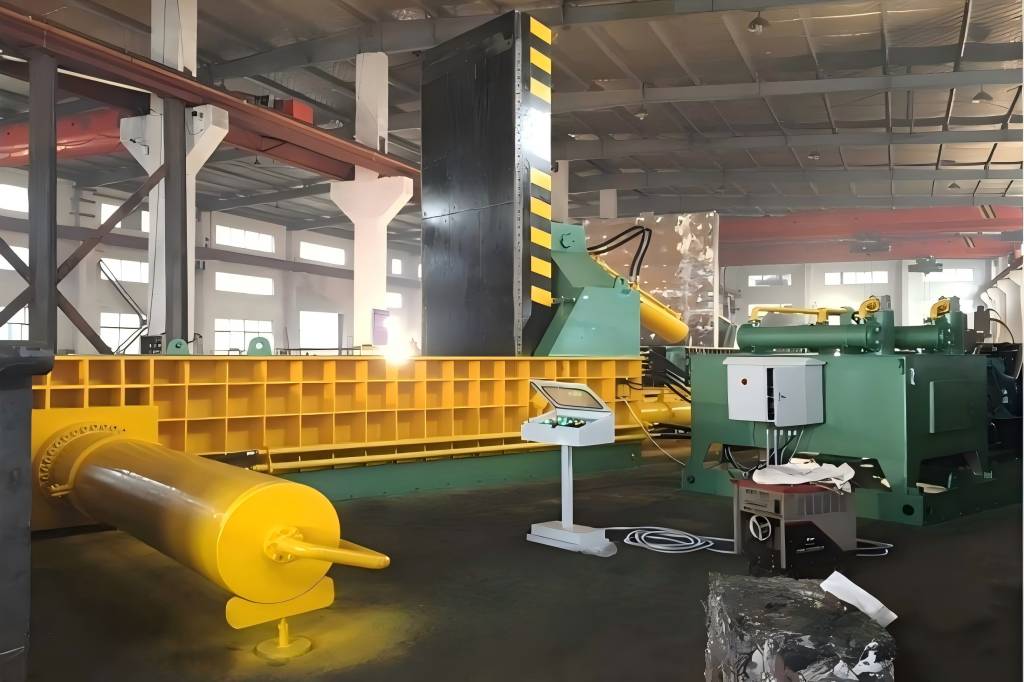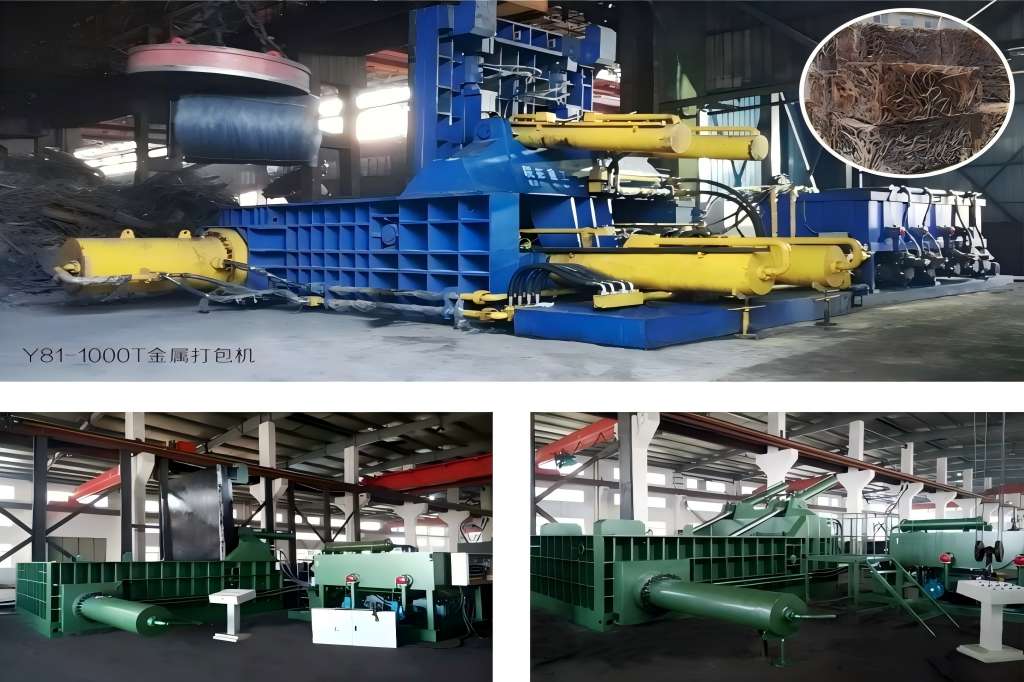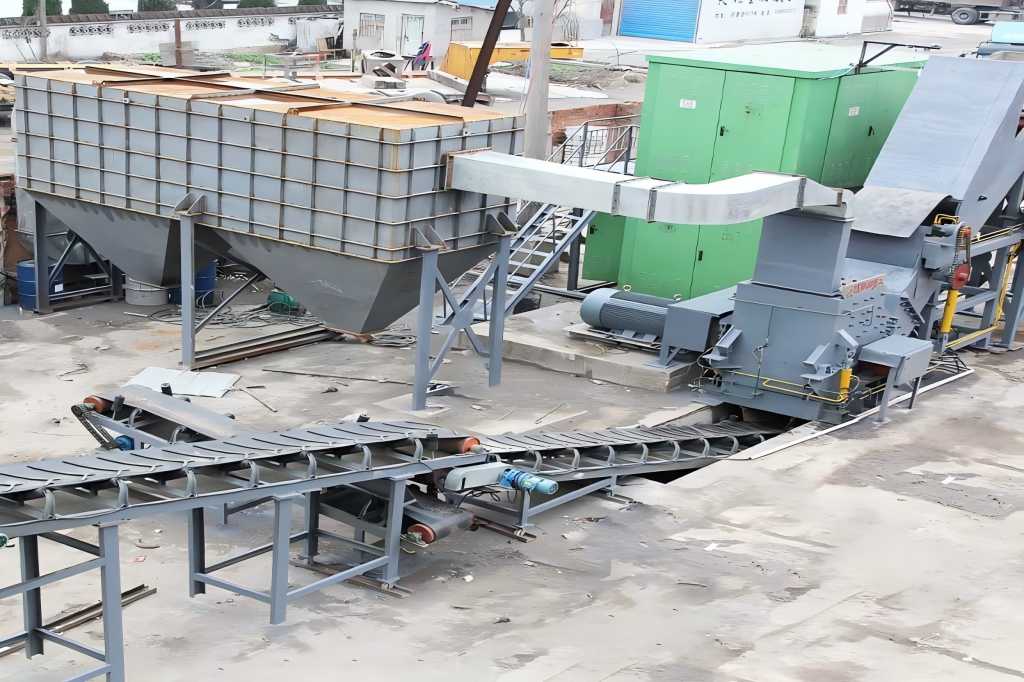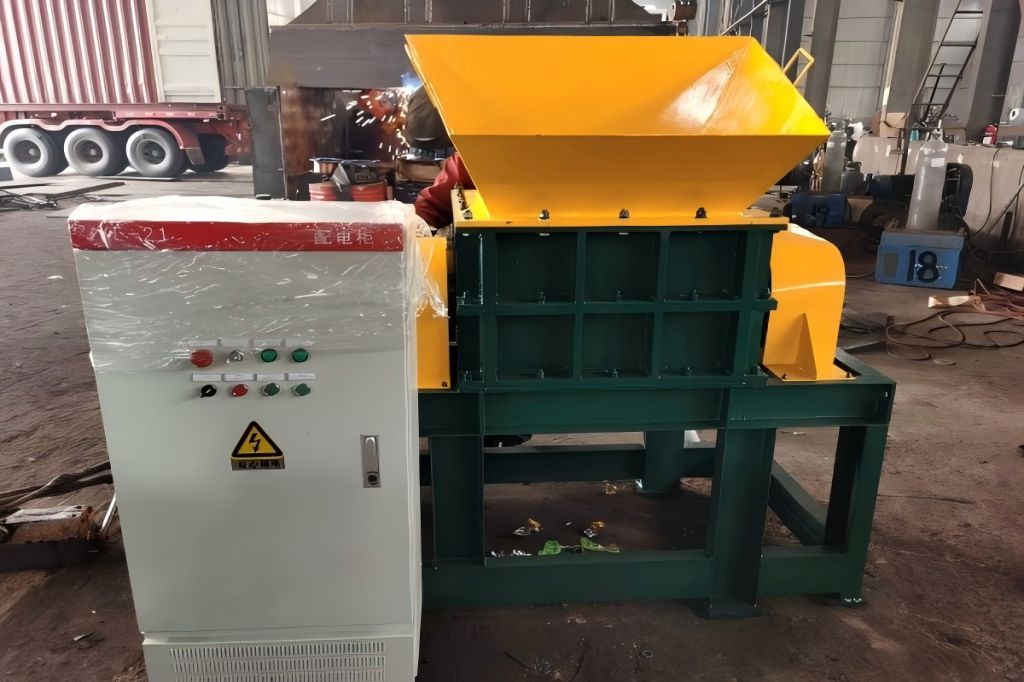Scrap metal recycling is crucial for sustainability, and as demand for recycled materials grows, facilities seek ways to improve efficiency and profitability. A key tool in this process is the baler, which compresses scrap into manageable bales for easier transport, storage, and resale. Maximizing baler efficiency can boost throughput, reduce costs, and enhance profitability.
This guide covers key specifications, improvement strategies, and practical tips for optimizing your baling operation.
Understanding Scrap Metal Balers and Their Role in Recycling
Scrap metal balers are used to compress scrap metal into compact, uniform bales, making them easier to handle and transport. By reducing the volume of scrap metal, balers improve storage space and simplify the logistics of moving materials to recycling facilities or downstream processors. Scrap metal balers play an essential role in the recycling process, contributing to waste reduction and supporting the reuse of valuable metals.
How Balers Improve Recycling Efficiency
- Space-saving: By compressing metal waste into compact bales, scrap metal balers make the storage and transportation of scrap more efficient.
- Improved Material Handling: Baled scrap is easier to handle using automated systems like conveyors, which reduce labor costs and improve processing speed.
- Higher Bale Density: Dense bales allow for more efficient transportation and a higher market value for recycled materials.
Key Specifications of Scrap Metal Balers
To understand the capabilities of different scrap metal balers, it’s essential to review the key specifications that determine their suitability for various operations. Below, we present tables detailing the main attributes of scrap metal balers, including compression force, chamber size, bale size, power consumption, cycle time, and material suitability.
Compression Force
The compression force indicates the baler’s ability to handle different types of scrap materials. Higher compression force is required for denser and more durable materials.
| Nominal Force (Tons) | Material Type | Examples of Applications | Common Models |
| 125–250 | Lightweight metals (e.g., aluminum cans, wires) | Small-scale recycling facilities | Y81-1250, Y81-1600 |
| 315–630 | Mixed metals (e.g., steel pipes, copper) | Medium-sized operations | Y81-3150B, Y81-6300A |
| 800–1500 | Heavy-duty metals (e.g., car frames, steel plates) | Large-scale industrial recycling | Y81-8000, Y81-15000 |
Chamber Size
Chamber size determines the volume of scrap metal the baler can handle in a single compression cycle. Larger chambers are better suited for larger operations or heavier scrap materials.
| Chamber Size (L×W×H mm) | Suitability | Example Models |
| 1200×700×600 | Compact facilities; small scrap loads | Y81-1250, Y81-1600 |
| 2000×1400×900 | Medium-sized operations; moderate scrap volume | Y81-2500A, Y81-3150A |
| 4000×3000×1400 | High-capacity; large industrial scrap loads | Y81-6300B, Y81-15000 |
Bale Size
Bale size affects storage and transportation efficiency. Larger bales are more compact and cost-effective for industrial-scale transportation.
| Bale Size (W×H mm) | Common Uses | Example Models |
| 300×300 | Lightweight scrap; minimal storage requirements | Y81-1250, Y81-1600 |
| 400×400 to 600×600 | Mixed scrap materials; general recycling purposes | Y81-2000, Y81-3150B |
| 700×700 to 800×800 | Heavy scrap; industrial-scale transportation | Y81-8000, Y81-15000 |
Power Consumption
The power requirements of scrap metal balers affect operational costs. Energy expenditures throughout time might be decreased with the aid of energy-efficient models.
| Power Consumption (KW) | Applications | Example Models |
| 15–37 | Small facilities; low energy usage | Y81-1250, Y81-1600 |
| 45–90 | Medium to high throughput operations | Y81-3150A, Y81-4000C |
| 135–330 | High-capacity industrial recycling plants | Y81-15000, Y81-12500 |
Cycle Time
Cycle time refers to how quickly a baler can compress and eject a bale. Faster cycle times lead to higher throughput and improved productivity.
| Cycle Time (Seconds) | Efficiency Level | Application Example |
| 60–90 | Moderate speed; small operations | Compact balers handling lightweight materials |
| 30–60 | High efficiency; medium facilities | Moderate throughput for mixed materials |
| <30 | Ultra-fast; industrial use | Large facilities processing heavy-duty scrap |
Material Suitability
Different balers are optimized for processing different material types, which influences the baler’s force, chamber size, and features.
| Material Type | Recommended Baler Type | Common Features |
| Ferrous Metals | High-force balers with magnetic separators | High-density bales; large chambers |
| Non-Ferrous Metals | Medium-force balers with adjustable settings | Precision compression |
| Mixed Materials | Two-ram balers for versatility | Customizable compression modes |
Choosing the Right Baler
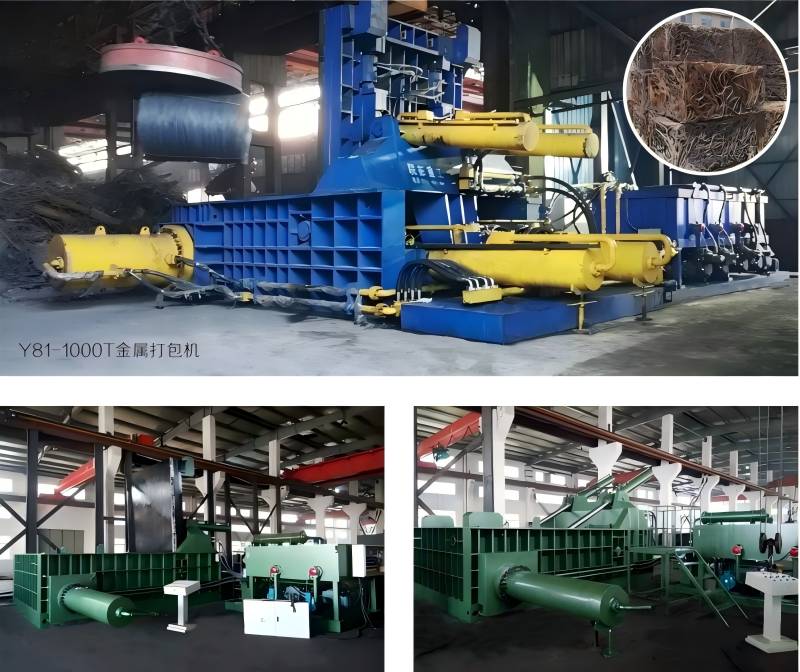
Your recycling operation’s throughput, operating expenses, and profitability are all directly impacted by the kind of baler you make. With a variety of baler types available, it’s essential to match the right equipment to your facility’s specific needs.
The key factors to consider when choosing a baler include material type, processing volume, space availability, budget, and operational requirements.
Key Considerations When Choosing a Baler
When evaluating which baler is best for your operation, keep the following factors in mind:
Material Type: Different materials require different levels of compression, force, and specific baler features to optimize processing. The most common materials processed in scrap metal balers include:
Ferrous Metals: Steel, iron, and other metals that are magnetic necessitate a high level of compression force for processing. Ferrous materials benefit from balers with magnetic separators, which help remove contaminants during processing.
Non-Ferrous Metals: Metals such as aluminum, copper, and brass are less dense and require a lower compression force than ferrous metals. These metals benefit from balers with adjustable compression settings to avoid over-compression, which could damage the materials.
Mixed Materials: For operations that handle a variety of metal types, including ferrous and non-ferrous metals, two-ram balers offer flexibility and can handle diverse materials with different density requirements.
Processing Volume and Throughput: The throughput requirements of your facility—i.e., the amount of scrap metal processed per hour or day—will influence the size and type of baler you need.
- Low-volume operations (small to medium-sized recycling centers) may benefit from vertical balers or smaller horizontal balers. These balers are efficient for handling moderate quantities of scrap metal and are often more compact.
- High-volume operations, such as large-scale industrial recyclers, may require high-capacity two-ram balers or horizontal balers. These balers are designed for continuous operation, offer higher throughput, and are capable of compressing large volumes of scrap metal at faster rates.
Available Space: The available space in your facility will influence the choice of baler. Certain balers, like vertical balers, are perfect for small-scale companies with limited space because they are made for small places. However, for larger operations with more space, horizontal balers, and two-ram balers may be more suitable as they tend to require more floor space but offer higher efficiency and output.
Bale Size Requirements: The size of the bales you need to produce will also determine which baler is the best fit. Larger bales are more cost-effective for transportation, especially for large-scale operations. However, smaller bales may be more suitable for smaller-scale recycling facilities where space is limited. The ability to adjust bale size is another key factor to consider. Two-ram balers, for example, often offer customizable bale sizes depending on the material type and facility needs.
Energy Efficiency and Power Consumption: Energy efficiency is an important consideration, particularly for large-scale operations with high power demands. Balers with higher power consumption will incur more operational costs, so it’s important to balance the power needs with the capacity and throughput of the baler. Energy-efficient models can reduce long-term operating expenses, making them a good investment for facilities looking to minimize power consumption without compromising output.
Budget: While higher-end balers, such as two-ram balers, offer more flexibility and are designed for high-volume operations, they come with a higher upfront cost. For smaller operations with more limited budgets, vertical balers or smaller horizontal balers might offer a more cost-effective solution. Making a decision requires taking into account both the initial investment and ongoing running costs, such as personnel, maintenance, and power.
Types of Balers: Characteristics Comparison
| Characteristic | Vertical Balers | Horizontal Balers | Two-Ram Balers |
| Design | Compact, vertical chamber design | Horizontal chamber design, larger footprint | Horizontal design with two compression rams |
| Ideal For | Small to medium-sized operations, lightweight scrap | Medium to large-scale operations, mixed and heavy scrap | High-volume operations with diverse materials |
| Material Handling Capacity | Low to medium scrap volume | High throughput, large and mixed materials | Very high throughput, large volumes of mixed materials |
| Cycle Time | Moderate (60-90 sec) | Fast (30-60 sec) | Ultra-fast (<30 sec) |
| Power Consumption | Low (15-37 KW) | Medium (45-90 KW) | High (90-330 KW) |
| Space Requirements | Minimal space required | Requires more space for installation | Requires significant space for operation |
| Cost | Low initial cost | Medium to high initial cost | High initial cost |
| Automation | Manual feeding and unloading | Automated feeding, continuous operation | Fully automated, handles continuous material flow |
| Maintenance | Low; fewer components, easier to maintain | Medium; more complex, higher maintenance needs | High; more components and parts to maintain |
| Best For | Small-scale, limited budget operations | Medium to large operations with a variety of materials | Large-scale operations with high volumes of mixed materials |
| Bale Density | Moderate to high, suitable for lighter scrap | High, optimized for large and mixed materials | Very high, produces dense bales for better transport efficiency |
| Examples of Use | Aluminum cans, paper, cardboard, small scrap | Steel, copper, aluminum, mixed metals | Industrial recycling of scrap metal, car frames, large-scale operations |
Strategies to Maximize Production Efficiency
Optimize Bale Density
Adjusting the compression settings is a key factor in maximizing bale density. By ensuring that the baler compresses the materials optimally, you can reduce transportation costs and enhance the resale value of your materials.
- Light Scrap: Lower compression pressure is recommended to prevent material damage and reduce wear on the baler.
- Heavy Scrap: Maximize compression to create the densest bales possible. Dense bales are more efficient for transportation and generate higher revenue.
Leverage Automation
Automation is crucial in maximizing production efficiency. Automated feeding systems and programmable logic controllers (PLCs) are two features that guarantee uniformity in the production process and lessen the need for manual work. Automated balers can handle continuous material flows, providing consistent bale sizes and densities.
- Consistency: PLCs ensure that the baler operates efficiently and produces uniform bales, which enhances product quality.
- Labor Savings: By eliminating the need for manual intervention, automation lowers labor costs while boosting productivity.
Schedule Regular Maintenance
Preventive maintenance lowers the chance of unplanned problems and guarantees that the baler runs at its best. Regular maintenance tasks include:
- Inspecting hydraulic systems for leaks or pressure drops.
- Replacing damaged components, like cutting blades and seals.
- Cleaning the chamber to prevent material buildup and maintain consistent performance.
Conclusion
Maximizing production efficiency with scrap metal balers is essential for any recycling operation aiming to improve throughput and profitability. By selecting the right baler, optimizing bale density, leveraging automation, and performing regular maintenance, recycling facilities can significantly improve their overall production efficiency.

